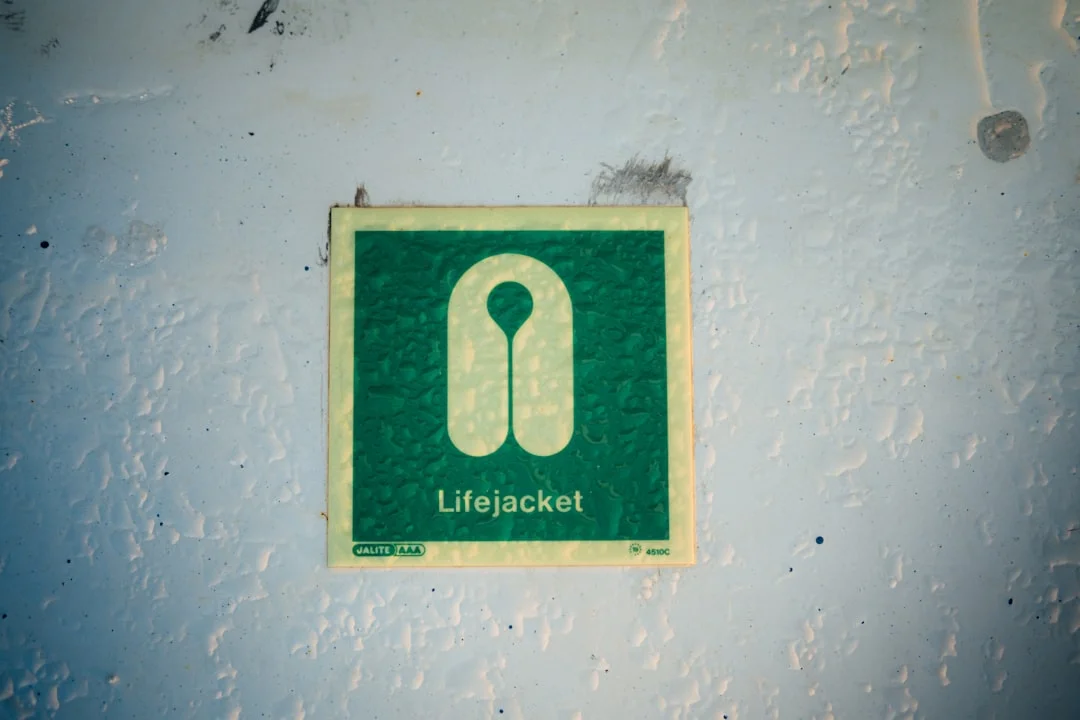Estimated Reading Time: 7 minutes
HHve you ever stopped to consider the air you breathe within your own home?
It’s a question that often gets overlooked, yet it’s incredibly important, especially if you’re striving for a healthier lifestyle.
The truth is, our homes, while meant to be havens, can sometimes be filled with hidden toxins that quietly undermine our well-being.
Today, we’re diving deep into how to detox your home environment, transforming your living space into a sanctuary of health and vitality.
It’s easy to assume your home is clean simply because you regularly dust and vacuum.
However, what about the invisible culprits lurking in the shadows?
From the volatile organic compounds (VOCs) emitted by everyday products to the potential build-up of allergens and mold, there’s a lot more to consider.
This isn’t about being overly anxious; it’s about being informed and taking proactive steps to create a truly healthy living space.
I remember when I first started learning about this. I was shocked! My initial efforts were, let’s just say, a bit haphazard.
But with time and research, I developed a system that has made a noticeable difference in my own health and well-being.
And now, I’m excited to share these insights with you.
Why should you bother figuring out how to detox your home environment? The answer lies in the impact of our surroundings on our health.
Think of it like this: your home is where you spend a significant portion of your life. It’s where you sleep, eat, and relax.
If this space is filled with toxins, it can lead to various health issues, ranging from allergies and respiratory problems to more serious long-term consequences.
Believe me, the rewards are far greater than the effort. One thing I’ve learned: small changes can yield big results.
One of the most eye-opening statistics I came across was a study revealing that indoor air pollution can be up to five times worse than outdoor air pollution.
That statistic really drove the point home for me. It highlighted the importance of taking control of your home’s air quality.
The benefits are numerous: improved sleep, enhanced energy levels, reduced allergy symptoms, and a general sense of well-being.
Taking steps to detoxify your home is essentially an investment in your health and your family’s future.
Identifying the main culprits is the first step in learning how to detox your home environment.
Several common household items and practices contribute to indoor air pollution and exposure to harmful substances. These include:
It’s worth noting that some products are marketed as’eco-friendly’but might still contain harmful chemicals.
Always read labels carefully and do your research. And a good place to start is just your own kitchen and bathroom. You might be surprised!
Now, let’s dive into the practical steps for how to detox your home environment.
It’s not about an overnight transformation; it’s about making small, sustainable changes over time.
Consistency is key, and the results are well worth the effort. Let’s start with some of the most effective strategies.
The air we breathe is fundamental. Poor air quality can contribute to many health problems, so this is an essential part of the process.
Here are some strategies:
Your cleaning products can be major sources of harmful chemicals. It’s time to re-evaluate what you use to keep your home clean.
![Air purification in Detox Your Home [Guide]: How to Create a Healthier Living Space air purification for detox your home [guide]: how to create a healthier living space](https://www.trendynutritionhub.com/wp-content/uploads/2025/11/temp_air_purification_1763342237.webp)
A cluttered home can trap dust, mold spores, and allergens.
Decluttering is not just about aesthetics; it’s a vital step in learning how to detox your home environment.
Your lifestyle and dietary choices can also impact your home environment.
We often underestimate the connection between our habits and our surroundings.
Taking steps to improve your habits is also an important part of how to detox your home environment.
Switching from conventional household products to natural alternatives can seem daunting. It’s a process, not a race.
Start by making small, manageable changes. One thing I did was I gradually replaced my cleaning products as they ran out.
This approach minimizes waste and makes the transition less overwhelming.
Embracing a mindful approach means being aware of the products you bring into your home and their potential impact on your health and the environment.
Here’s a quick guide:
The long-term benefits of learning how to detox your home environment extend far beyond just feeling better.
Creating a healthier living space can significantly impact your overall well-being, both physically and mentally.
It contributes to a stronger immune system, better sleep, and an overall sense of peace.
Making small, consistent changes in your environment can create a haven of health and well-being.
It’s about taking ownership of your space and the choices that shape your health. Remember, a healthier home is a happier home!
And that’s the journey. It’s not always easy, but the results are absolutely worth it.
So, take a deep breath, look around your home, and start your detox journey today! What are you waiting for?
Are you ready to take the next step towards a healthier home? Join our newsletter for weekly health tips!
{
“@context”: “https://schema.org”,
“@type”: “Article”,
“headline”: “Article Title”,
“description”: “Article description”,
“image”: “Featured image URL”,
“author”: {
“@type”: “Person”,
“name”: “Author Name”
},
“publisher”: {
“@type”: “Organization”,
“name”: “Site Name”,
“logo”: {
“@type”: “ImageObject”,
“url”: “Logo URL”
}
},
“datePublished”: “Publication Date”,
“dateModified”: “Last Modified Date”
}
Frequently Asked Questions
What are the most common misconceptions about detoxing your home?
One common misconception is that detoxing your home requires a complete overhaul all at once. In reality, you can start small, gradually replacing conventional products with natural alternatives and making incremental changes. Another misconception is that simply opening windows is enough.
While ventilation is vital, it’s just one part of the puzzle. Addressing potential sources of pollution, like VOCs from cleaning products or mold growth, is also crucial. Taking a balanced, sustained approach is more effective than attempting everything at once.
How can I tell if my home has poor air quality without expensive testing?
You don’t always need costly professional testing to get an idea of your home’s air quality. Pay close attention to your body and environment. Do you experience frequent headaches, fatigue, or respiratory issues (like coughing or wheezing)?
Are there noticeable odors, especially after cleaning or using certain products? Look for visible signs of mold or mildew, or excessive dust accumulation. These are all potential indicators. Consider purchasing an affordable air quality monitor for added insight.
Are’eco-friendly’products always truly better for my home’s air quality?
Not necessarily. The term’eco-friendly’can be misleading. Always read product labels carefully. Look for certifications from reputable organizations, such as the EPA’s Safer Choice program, which indicates products have been vetted for harmful chemicals.
While some products are marketed as’green’or’natural’, they may still contain ingredients that can negatively impact indoor air quality. Focus on products with transparent ingredient lists and avoid those with artificial fragrances or harsh chemicals.
What if I can’t afford to replace all my cleaning products at once? How can I still start detoxing?
You don’t need to overhaul everything overnight! Start by replacing the products you use most frequently, such as all-purpose cleaners or dish soap, with more natural alternatives. Consider making your own cleaners using simple ingredients like vinegar, baking soda, and essential oils.
Focus on the areas where you spend the most time, such as your bedroom and living room. Even small, incremental changes can make a big difference over time. Remember, consistency is more important than a massive, immediate shift.
How does decluttering contribute to a healthier home environment?
Decluttering plays a crucial role in creating a healthier home by reducing potential hiding places for dust mites, allergens, and mold spores. Cluttered spaces tend to trap dust and make cleaning difficult, leading to a build-up of these irritants.
Reducing the amount of stuff in your home also decreases the need for excessive cleaning products, minimizing your exposure to harmful chemicals. A less cluttered home is generally easier to clean, allowing you to create a cleaner and healthier living space overall.
Can indoor plants really make a significant difference in indoor air quality, and which ones are best?
Yes, certain indoor plants can significantly contribute to improved air quality. Through the process of photosynthesis, they absorb carbon dioxide and release oxygen.
Some plants, like snake plants, spider plants, and peace lilies, are also known to filter out common indoor pollutants like formaldehyde, benzene, and xylene.
While the impact of a single plant may seem small, having multiple plants throughout your home can create a cumulative effect, leading to a noticeable improvement in air quality. Additionally, plants can help increase humidity, which can be beneficial in dry indoor environments.
document.addEventListener(‘DOMContentLoaded’, function() {
// 调整社交分享按钮位置
var sharingContainer = document.querySelector(‘.sharedaddy.sd-sharing-enabled’);
var recommendedReading = document.querySelector(‘h2:contains(“Recommended Reading”)’);
if(sharingContainer && recommendedReading) {
// 移动社交分享按钮到推荐阅读上方
var parent = recommendedReading.parentNode;
parent.insertBefore(sharingContainer, recommendedReading);
}
});


![Detox Your Home [Guide]: How to Create a Healthier Living Space purification for detox your home [guide]: how to create a healthier living space](https://www.trendynutritionhub.com/wp-content/uploads/2025/11/temp_purification_1763342236-150x150.webp)

![Boost Your Energy: A Natural Morning Routine Guide [2025] habits for boost your energy: a natural morning routine guide [2025]](https://www.trendynutritionhub.com/wp-content/uploads/2025/11/temp_habits_1763342040-150x150.webp)
![Unlocking Wellness: How to Reduce Exposure to Toxins [2025] living for unlocking wellness: how to reduce exposure to toxins [2025]](https://www.trendynutritionhub.com/wp-content/uploads/2025/11/temp_living_1763341946-150x150.webp)
![Go Green: Easy Organic Alternatives for Your Home [2025] living for go green: easy organic alternatives for your home [2025]](https://www.trendynutritionhub.com/wp-content/uploads/2025/11/temp_living_1763341845-150x150.webp)
![purification for detox your home [guide]: how to create a healthier living space](https://www.trendynutritionhub.com/wp-content/uploads/2025/11/temp_purification_1763342236.webp)


![habits for boost your energy: a natural morning routine guide [2025]](https://www.trendynutritionhub.com/wp-content/uploads/2025/11/temp_habits_1763342040.webp)
![living for go green: easy organic alternatives for your home [2025]](https://www.trendynutritionhub.com/wp-content/uploads/2025/11/temp_living_1763341845.webp)